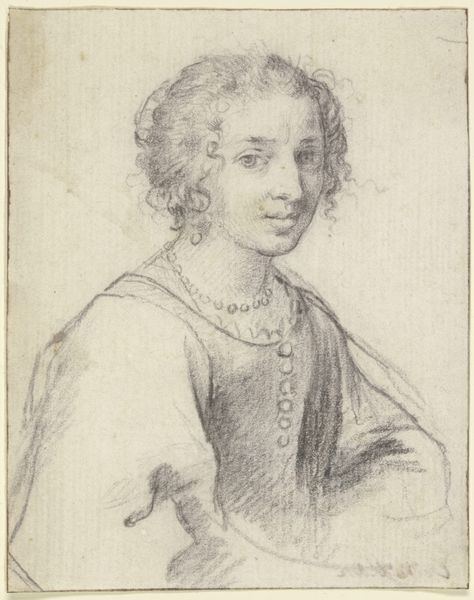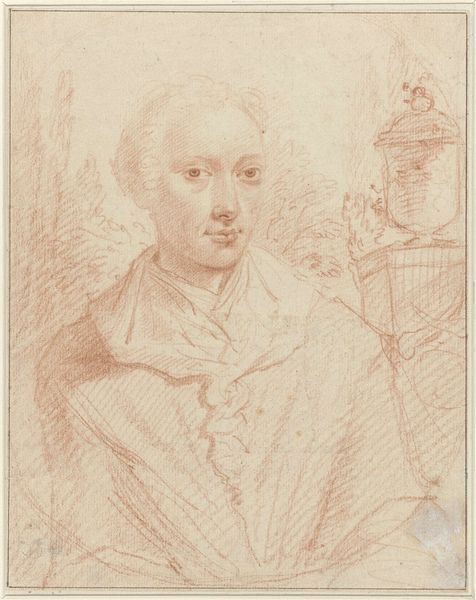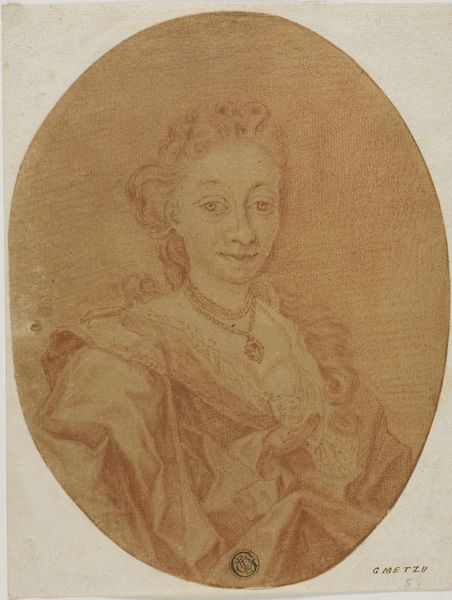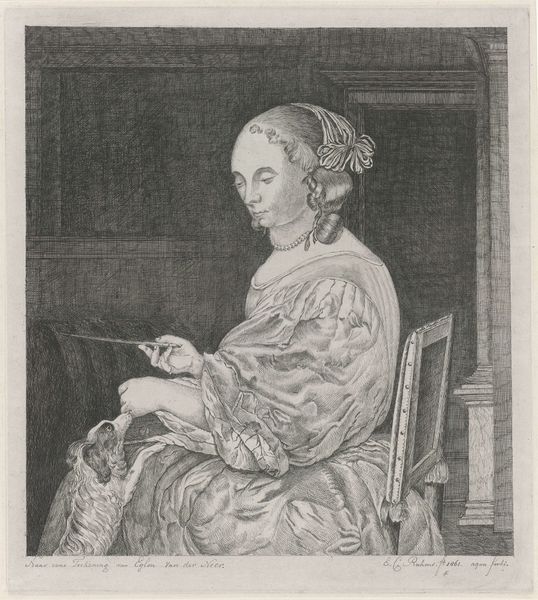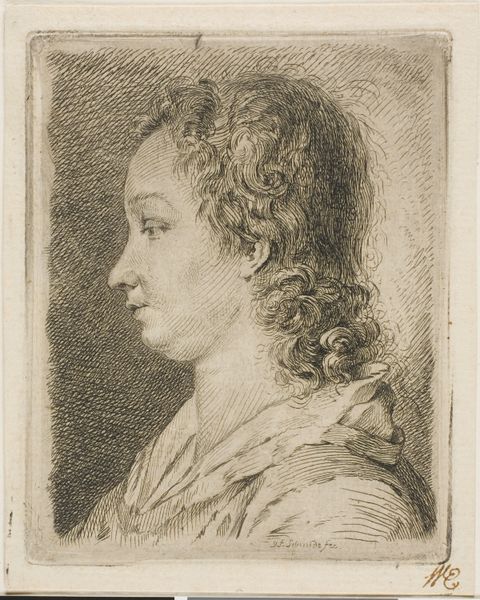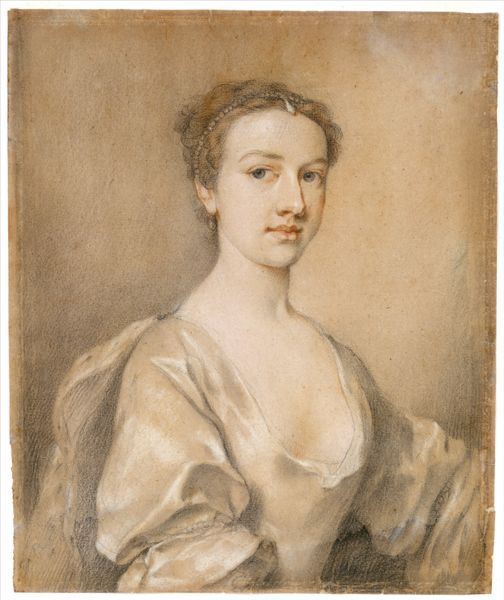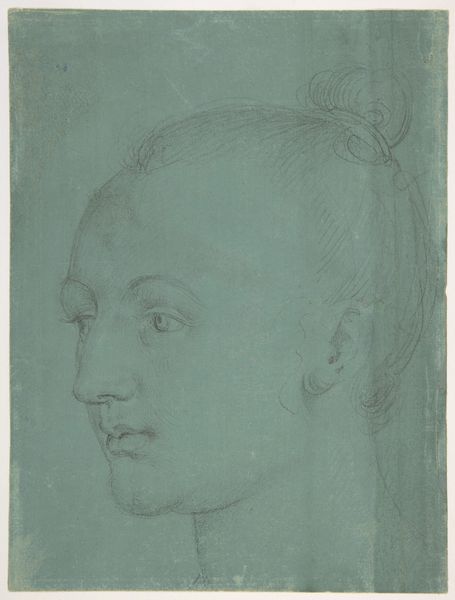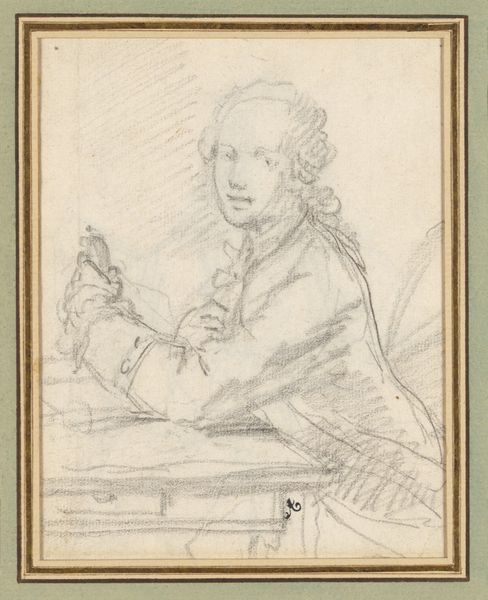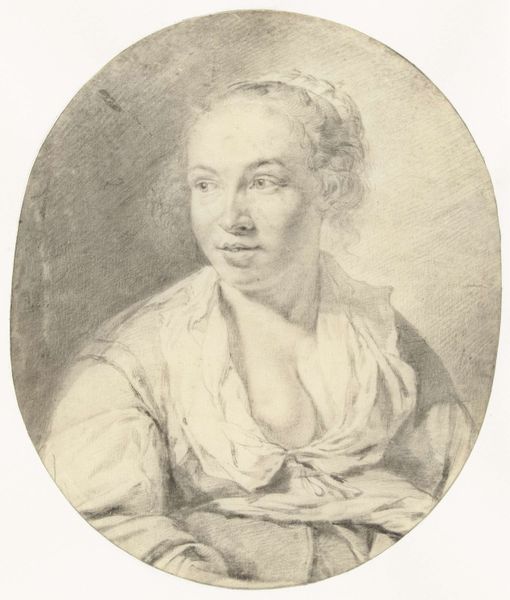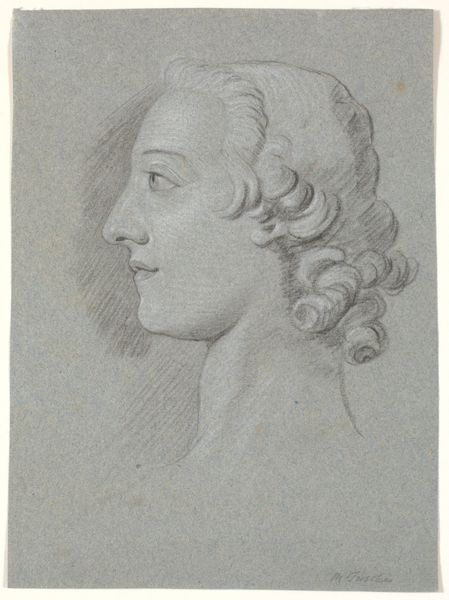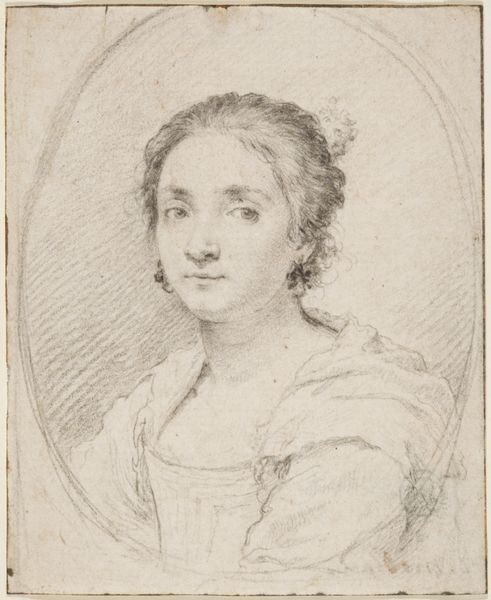
drawing, pencil
#
portrait
#
drawing
#
self-portrait
#
baroque
#
charcoal drawing
#
figuration
#
pencil drawing
#
pencil
#
portrait drawing
Dimensions: 218 mm (height) x 174 mm (width) (bladmaal)
Editor: Here we have Jürgen Ovens’ “Portrait of a Young Woman,” created in 1654 using pencil. There's a softness to the piece that I find quite striking. How would you interpret this work, given the period and its possible social context? Curator: It’s interesting that you perceive softness. The direct gaze of the woman strikes me first, and leads to questions about identity, power, and representation within Baroque portraiture. What does it mean for a woman to be presented this way in the 17th century? The drawing itself, with its meticulous detail, mimics painting. How might this relate to gender and the hierarchies within artistic practices at the time? Editor: I didn't initially consider the power dynamics at play. Is it possible that she was someone of status commissioning a drawing to align herself with artistic circles of the time? Curator: Exactly! Think about the cultural norms around women's visibility and agency then. Who was allowed to be seen, and on whose terms? Portraits often served to solidify social standing and political power. And what does it mean that this portrait seems to be rendered primarily in earth tones? Editor: It perhaps downplays the wealth, focusing instead on her direct expression and the details of her face. This is helping me think of this work as an expression of individualism during that period. Curator: Yes, perhaps even subtly challenging expectations around female portraiture by emphasizing individuality over overt displays of wealth or status. By looking at the materials, and the historical context, can open dialogues about this young woman's identity, and Baroque society as a whole. Editor: This conversation made me realize the piece speaks to representation and the challenges of reading history. Thank you! Curator: And for me, the insight is to keep questioning portraiture’s role in shaping our understanding of individual and collective identity.
Comments
No comments
Be the first to comment and join the conversation on the ultimate creative platform.
